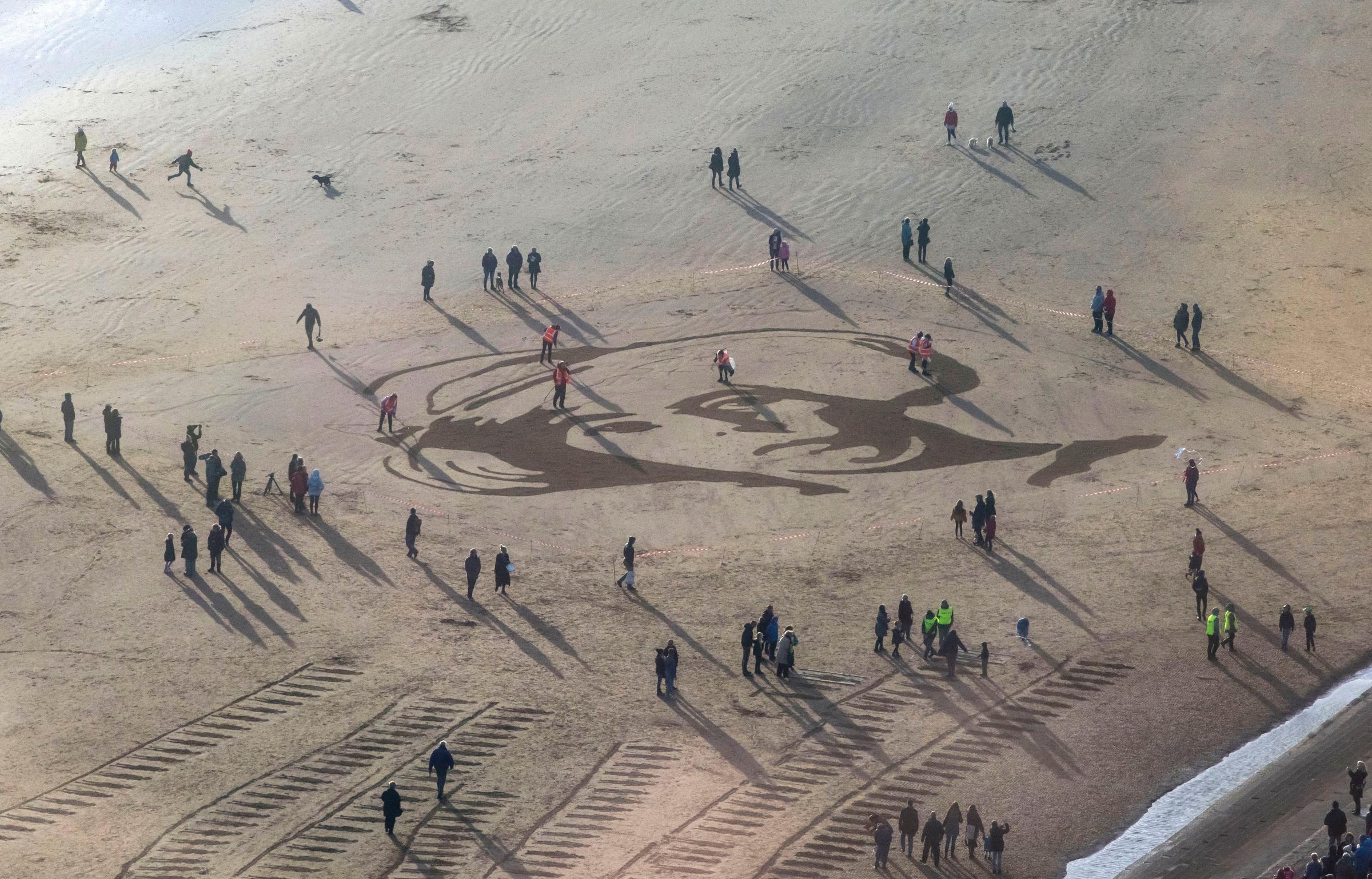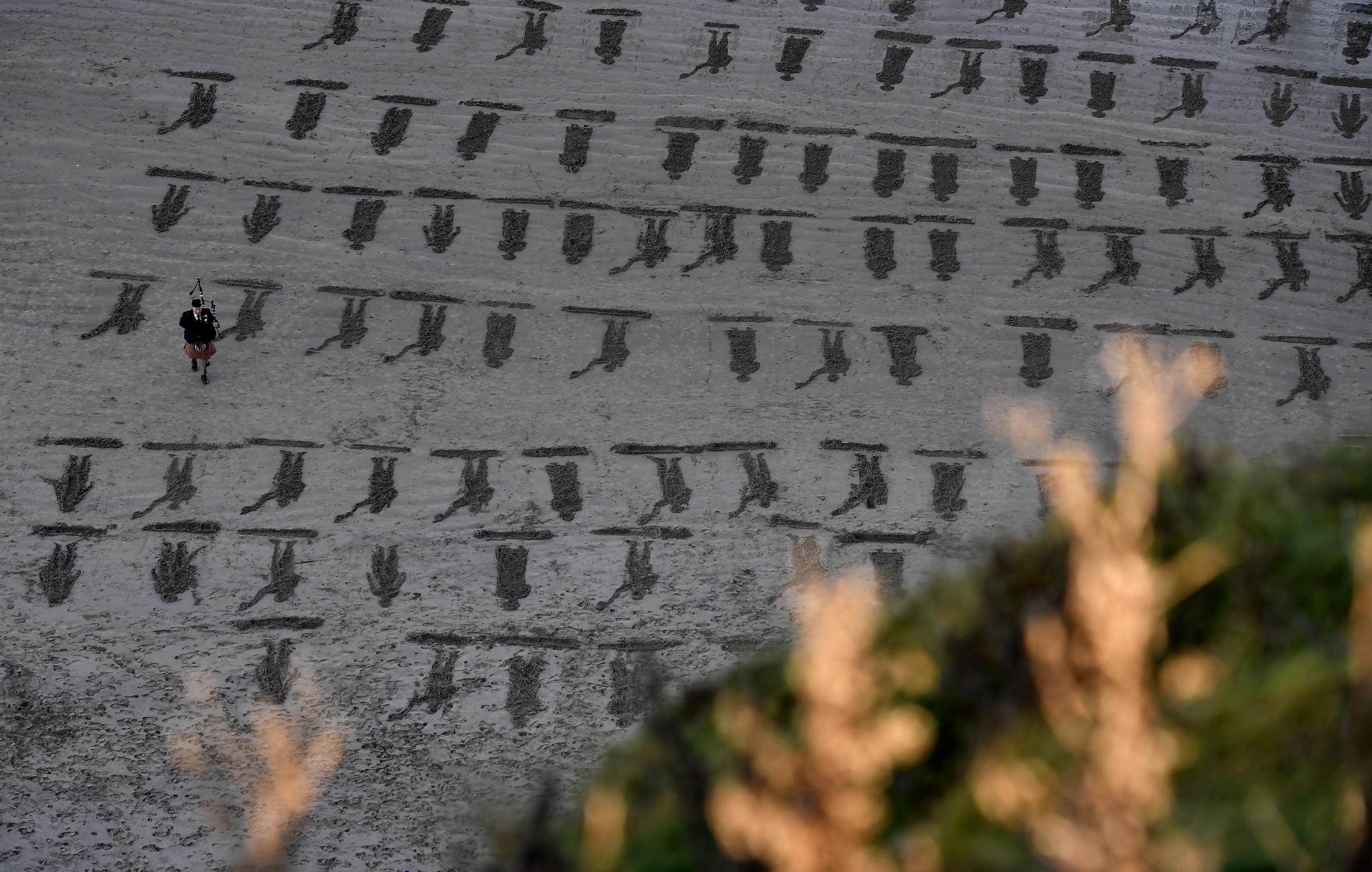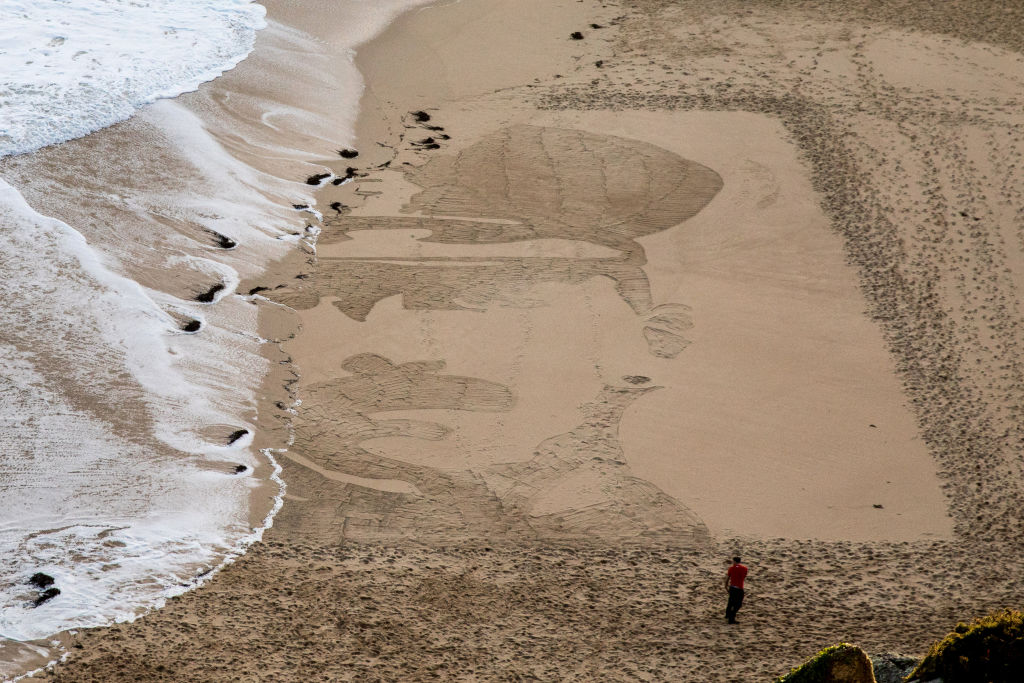Artists created 32 enormous sand portraits on beaches all over the United Kingdom to commemorate the 100th anniversary of the armistice that ended the World War I on Sunday.
The portraits, depicting casualties of the war, were created as part of a remembrance project organized by filmmaker Danny Boyle, in partnership with 14-18 NOW, a UK artistic program that commissions artwork to commemorate the centenary of World War I. The project, called Pages of the Sea, worked with arts groups all over the UK to create portraits on the same day, on beaches in England, Scotland, Wales and Northern Ireland.

In a video explaining the project, Boyle said that the portraits were meant to be a “partner” to the more formal ceremonies happening at monuments and cemeteries around the UK. Poet Laureate Carol Ann Duffy also wrote a poem for the project. Participants were invited to read it aloud during the occasion.
According to the Pages of the Sea website, Boyle chose whom to portray in order to capture the range of ordinary people who “gave their lives to the war effort.”
“The portraits feature a range of soldiers of different ranks and regiments, Privates to Lieutenants and Majors, as well as doctors and nurses,” the website reads. “Many are from the areas or communities their portrait will be featured in, others are from towns and cities elsewhere, or from international communities. These individuals are a just small selection of the millions who gave their lives to the war.”
The portraits featured individuals like poet-soldier Wilfred Owen, whose face was etched in sand in Folkestone, Kent, and Second Lieutenant Walter Tull, the first black officer in the British army. His portrait appeared on Ayr Beach in Scotland.

“As the tide returns… it will wash away this face for the last time really,” Boyle explained in the video. “It would be a final goodbye, a final salute to those who gave their lives.”
Imperial Military Nurse Rachel Ferguson’s face was rendered on a beach in Coleraine, Northern Ireland. She died in Bordighera, Italy in 1918. Like the others, her portrait was washed away by the tide within a couple of hours.

“Our beaches are unruly, and they’re ours,” Boyle explained. “They’re a great democratic space, so this seems like a fitting and wonderful place to salute [those who died] and to say goodbye.”
Watch footage of one of the beach portraits here:
More Must-Reads from TIME
- L.A. Fires Show Reality of 1.5°C of Warming
- Home Losses From L.A. Fires Hasten ‘An Uninsurable Future’
- The Women Refusing to Participate in Trump’s Economy
- Bad Bunny On Heartbreak and New Album
- How to Dress Warmly for Cold Weather
- We’re Lucky to Have Been Alive in the Age of David Lynch
- The Motivational Trick That Makes You Exercise Harder
- Column: No One Won The War in Gaza
Write to Alejandro de la Garza at alejandro.delagarza@time.com



